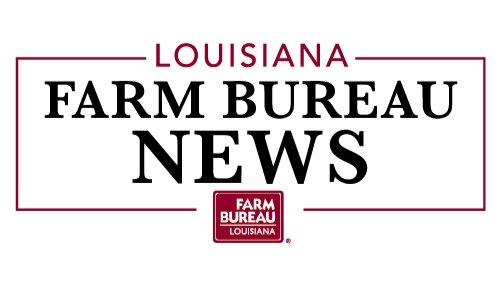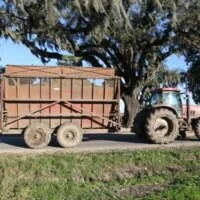Right now, the next generation of Louisiana sugarcane producers is getting their start as farmers, milling professionals, and researchers. It’s the circle of life in the sugarcane world.
Read MoreThere was great concern among Louisiana sugarcane farmers that the record cold temperatures at Mardi Gras would cause significant damage. It doesn’t appear the crop suffered any long-term effect from the freeze, but a cool, wet March and April has limited growth.
According to Kenneth Gravois, LSU AgCenter sugarcane specialist, damage was limited to a few isolated fields.
Read MoreSpring is the time when gardeners are busy preparing their rows and getting the soil ready for seed planting. It’s a rite of spring, a time for rebirth and new growth.
Some of you nurtured tomato plants in a protected spot hoping to get a head start on your tomatoes. With a successful garden, you become the most popular person in the neighborhood because you have too many tomatoes, eggplants and cucumbers and you are proud to give them away.
Across Louisiana, soybean, corn, and cotton farmers are doing the same thing.
Read MoreThe vernal equinox, aka spring equinox, came and went Saturday, March 20, marking the end of winter and the beginning of spring.
As all good aggies know, that means the economists at the Food and Agricultural Policy Institute (FAPRI) at the University of Missouri just published their new 10-year baseline for agricultural production and programs.
Read MoreAfter a year-long fight, the COVID-19 pandemic has taken its toll on a number of businesses and industries — but agriculture in Iberia Parish not only survived, it thrived.
Growing crops and harvesting them is a way of life in Iberia Parish. From corn, soybeans, wheat, cotton, grain sorghum, sugar cane, fruits and vegetables and even to cattle, the Teche Area’s agriculture is one of the most profitable businesses in Louisiana.
Read MoreSugar executive Randy Romero of Abbeville was elected president of the American Sugar Cane League by the organization’s membership.
He is the 51st president of the League, which was founded in 1922 by Louisiana’s sugar interests. He has been a League director since 2009.
Read MoreThe US Department of Agriculture, in its March 9 World Agricultural Supply and Demand Estimates report, lowered from February forecast sugar imports from Mexico as expected but also raised US sugar production and lowered deliveries, resulting in a higher-than-expected ending stocks-to-use ratio of 15.1% for the current 2020-21 marketing year.
Deliveries for food were forecast at 12,125,000 tons, raw value, down 75,000 tons from the February forecast and down 191,000 tons, or 1.6%, from 2019-20. Other delivery categories were unchanged from February, with total use forecast at 12,265,000 tons, down 75,000 tons from February and down 284,000 tons from a year earlier.
Read MoreLouisiana farmers grow many of the annual staple crops found across the United States, including corn, soybean, cotton and grain sorghum. However, Louisiana’s No. 1 valued row crop is sugarcane, a perennial that is only grown in two other states, Florida and Texas. Sugarcane was grown on 500,000 acres in 2020, adding more than $3 billion to the state’s economy.
Read MoreDue to the COVID - 19 virus, the 2021 Mid South Agricultural Labor Seminar will be conducted this year as a Zoom Virtual Seminar on Tuesday, March 9, 2021 from 9:00 a.m. to 12:00 noon. There is no registration fee to attend. This year, with new employer responsibilities due to the COVID virus, this year’s topics will focus on important current issues such as COVID pay, OSHA Regulations and Reporting Requirements and Housing.
Read MoreThe Louisiana Agriculture Hall of Distinction inducted three new members during a ceremony March 4 at the L’Auberge Hotel in Baton Rouge.
The new inductees are former Louisiana Farm Bureau Federation President Ronnie Anderson, of Ethel; sugarcane farmer John Gay, of Plaquemine; and Paul “Jackie” Loewer, of Branch, a rice farmer who has been a strong advocate for the rice industry in state and national organizations.
Read MoreFrom September 2020 through January 2021, folks in Louisiana’s sugarcane belt watched what seemed to be an endless parade of cane trucks hauling sugarcane to the mills.
Ultimately, the trucks delivered 16.5 million tons of bulk cane to the state’s 11 sugar mills. That’s a big number, and while farmers are millers are very happy with the tonnage, it’s difficult for the average person to understand exactly what 16.5 million tons of sugarcane means.
Read MoreJack Roney, who has served the American sugar industry for nearly 30 years, is set to retire from his position as the director of economics and policy analysis for the American Sugar Association (ASA). He has become a friend to the leadership of the American Sugar Cane League as well as the rank and file members.
Read MoreAs the 2021 crop production season begins, the U.S. Department of Agriculture’s National Agricultural Statistics Service (NASS) will contact approximately 1,100 Louisiana producers to determine their plans for the upcoming growing season.
Read MoreAfter nearly a week of freezing temperatures, farmers in Mississippi and Louisiana have suffered big losses in livestock and crops, and some of the worst damage won't be known for weeks.
"We just don't know how bad this freeze could have affected the crawfish, the strawberries and the sugarcane industries," said Jim Harper, president of the Louisiana Farmer Bureau Federation. "We could be talking in the millions of dollars, though, statewide."
Read MoreMore than 60 hours of subfreezing temperatures, including lows in the mid- to lower teens in the northern region of the Louisiana sugarcane belt, has many growers concerned about the effects it will have on next year’s crop
Read More














